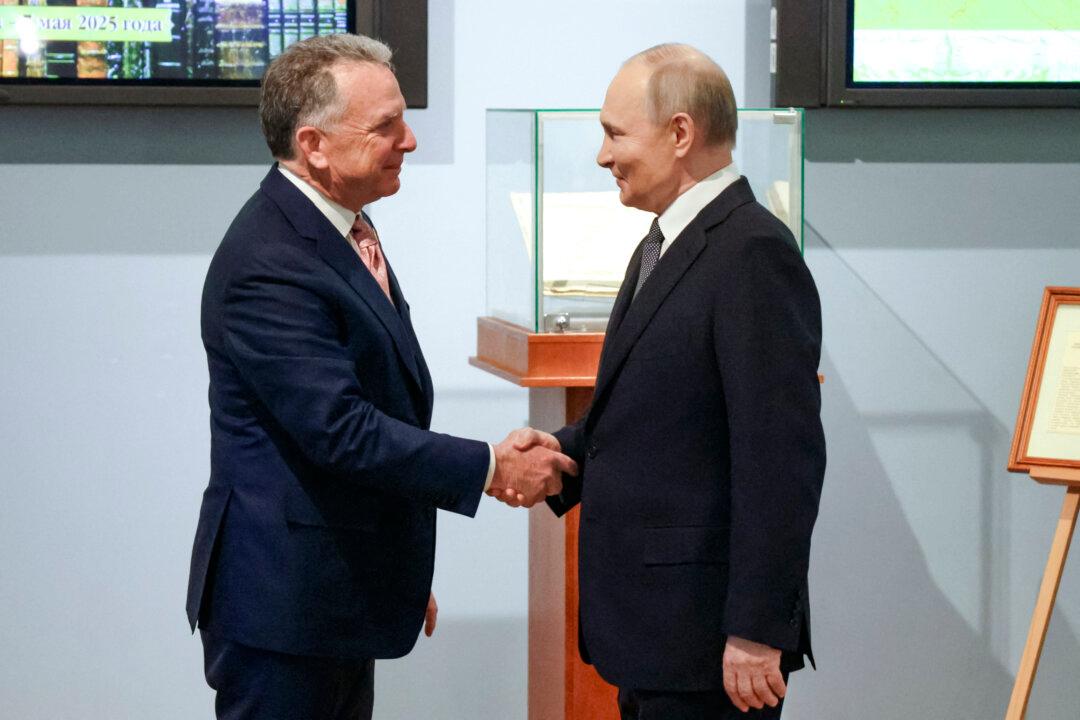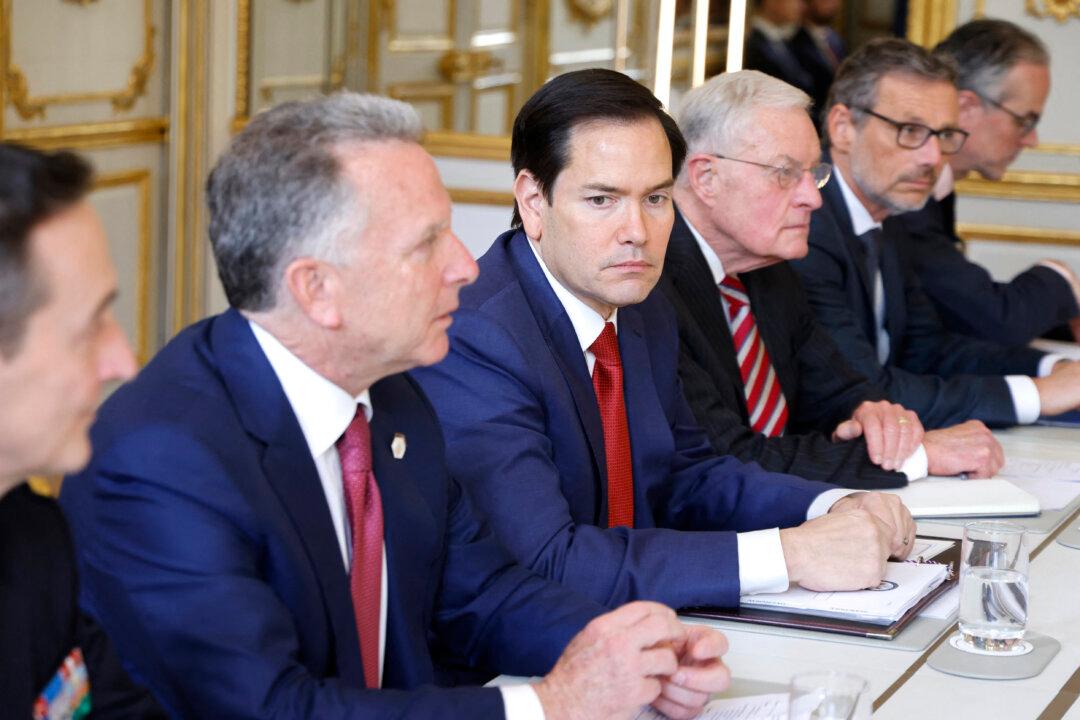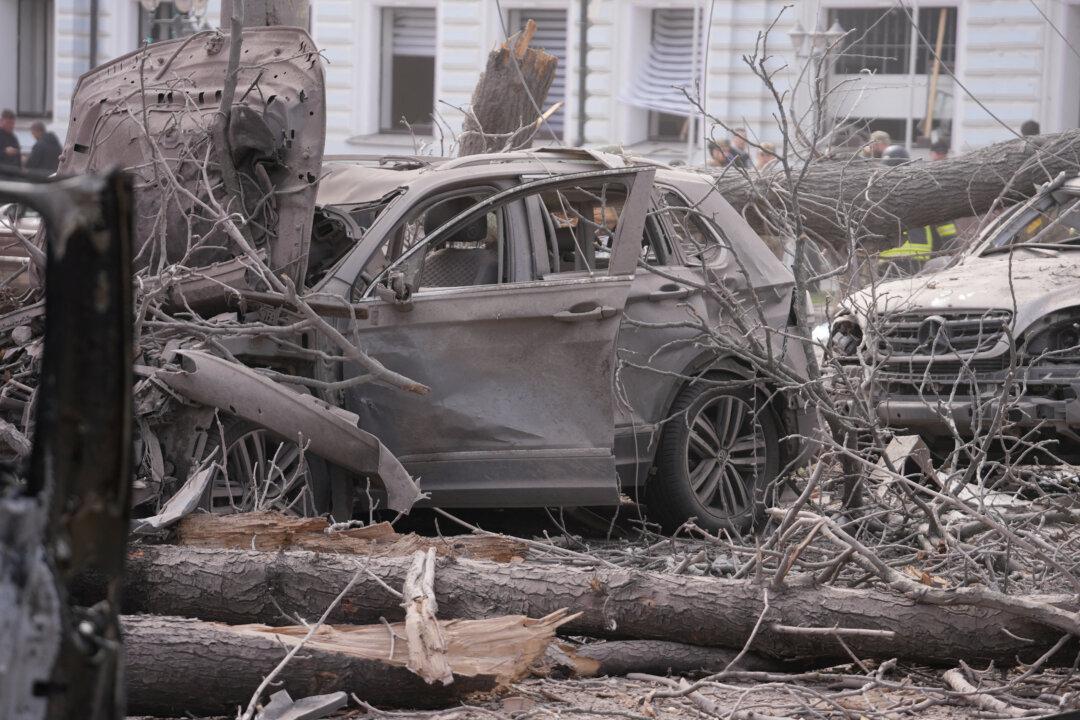A Ukrainian missile attack on western Russia appears to have confirmed reports of a U.S. decision to allow Kyiv to fire American long-range missiles at targets inside Russian territory.
On Nov. 19, Moscow reported that six ballistic missiles had been fired by Kyiv into Russia’s western Bryansk region.
Five were successfully downed by air defenses, the ministry said, adding that falling debris had set a military facility ablaze without causing deaths or injuries.
“According to confirmed data, U.S.-made ATACMS [Army Tactical Missile Systems] ... have been used,” the defense ministry said in a statement.
According to experts, the apparent shift in U.S. policy could tilt the dynamic in Ukraine’s favor after months of Russian gains on the battlefield.
“The ability to use long-range weapons will make quite a big difference to Ukrainian capabilities,” Andrew Corbett, a UK-based defense analyst, told The Epoch Times.
“Allowing Ukraine to strike at [logistics] hubs deep inside Russian areas will be a major factor in future developments,” said Corbett, a lecturer at the Defense Studies Department at King’s College London.
“Russia will have to pull its logistic hubs further back [away from the frontline] … or run the much higher risk of seeing its supply lines destroyed.”
Either way, Corbett said, Russia’s offensive operations will likely become “much more problematic” after the U.S. decision.

‘Finite Risk’
The reported attack follows a flurry of media reports suggesting that Washington had lifted its longstanding ban on Ukraine’s use of U.S. long-range weapons to strike targets deep inside Russian territory.Moscow has repeatedly warned that such a move by the outgoing administration in Washington would be tantamount to direct involvement in the war.
In September, Russian President Vladimir Putin said that if Ukraine were to target Russia with U.S. missiles, it would mean “NATO countries—the United States and European countries—are at war with Russia.”
Shortly before the ballistic missile attack, Putin signed a newly revised nuclear warfare doctrine, which reportedly calls for a nuclear response if Ukraine uses Western missiles—even conventional ones—against Russian territory.
According to a Kremlin spokesman, the apparent U.S. policy change will likely result in a “qualitatively new phase” of tension between the two nuclear powers.
“In terms of retaliatory escalation, there is always a finite risk,” Corbett said.
“But since 2014, Russia … has pushed this threat of escalation every time Western support is increased, yet it hasn’t escalated its efforts outside Ukraine.
“Ukraine has already launched forces into Russian territory with Western support—in Kursk—and nothing happened.”
Robert Peters, a defense policy analyst at the Heritage Foundation, a Washington-based think tank, said Kyiv’s use of long-range missile systems would bring several Russian military targets well within range.
“What would make the most sense for Ukrainian long-range fires is to go after Russia’s ability to produce its own offensive weapon systems,” Peters previously told The Epoch Times. “I would suggest they go after factories that produce drones and long-range fires, and then some weapons storage sites.”
Peters, who specializes in nuclear deterrence and missile defense, said airbases could also be targets.
Although such attacks “might have some marginal effect,” Peters said, “they’re not going to be a game-changer.” He said U.S. long-range missile systems would not be enough to reverse Russia’s recent battlefield gains.

Problem for Trump
The apparent shift in U.S. policy comes only two months before U.S. President Joe Biden is set to leave office, raising questions about its timing and the motivation behind it.“It’s hard to say why they did this now,” Peters said.
“They haven’t given any real justification for why they’re lifting the restrictions [on Kyiv’s use of U.S. missile systems] at this juncture.”
He noted previous statements from Washington in which U.S. officials had stated that lifting restrictions would “not significantly impact the course of the war.”
“But if it won’t change the course of the war, why lift the restrictions?” Peters said.
Peters said one thing that is certain is that “this decision, whether intentional or not, will create a dilemma for President [Donald] Trump the moment he’s inaugurated.”
Trump, who recently won reelection on pledges to quickly end the conflict in Ukraine, will return to the White House on Jan. 20.
Upon his return, Peters said, Trump will be forced to either reimpose the restrictions on Ukraine or accept the new rules of engagement as a fait accompli.
“If he reimposes the restrictions, he’s going to make some European capitals really upset—and Kyiv really, really upset,” Peters said.
If Trump lets Ukraine stage long-range missile strikes “against whatever targets it deems fit,” the incoming president will have to contend with an increasingly bellicose Moscow, Peters said.
As of publication, the White House had not yet confirmed the reported policy shift.
Regarding Ukraine, State Department spokesman Matthew Miller told reporters on Nov. 18, “I’m not going to speak to or confirm any policy changes.”
According to Peters, this reluctance to confirm the reported decision tends to lend credence to the reports.
“They didn’t deny it, so maybe it is true,” he said.
The lack of confirmation, Peters said, could signal a breakdown in interagency coordination—or internal conflict over Washington’s Ukraine policy.

Allies Divided, Moscow Incensed
Some European Union leaders have hailed the apparent U.S. policy shift, with France—one of Kyiv’s staunchest supporters—declaring that Paris could soon follow suit.“We openly said that this was an option that we would consider if it was to allow [Kyiv] to strike targets from where Russians are currently aggressing Ukrainian territory,” French Foreign Minister Jean-Noël Barrot told Le Monde on Nov. 18.
Along with U.S.-made ATACMS, Kyiv has already been given French SCALP missile systems and UK-supplied Storm Shadow missile systems.
But like Washington, London and Paris have both thus far forbidden Kyiv from using their respective missile systems to strike targets inside Russia.
According to unconfirmed reports, both capitals are now reconsidering their positions given Washington’s reported policy reversal.
Berlin, by contrast, has said it would not follow Washington’s lead by giving Kyiv German-made Taurus long-range missile systems.
“That is something I cannot and do not want to do,” German Chancellor Olaf Scholz said on the sidelines of a G20 Summit in Brazil on Nov. 18.
On the same day, Maria Zakharova, a spokeswoman for Russia’s foreign ministry, restated Moscow’s stance on the issue.
Ukrainian attacks on Russian territory—with Western long-range missiles—would be regarded, Zakharova said, as “the direct involvement of the United States and its satellites in combat against Russia.”
Such a policy shift by Kyiv’s Western backers would likely result in a “radical change” in the ongoing conflict’s “essence and nature,” she said in remarks cited by Russia’s Tass news agency.







